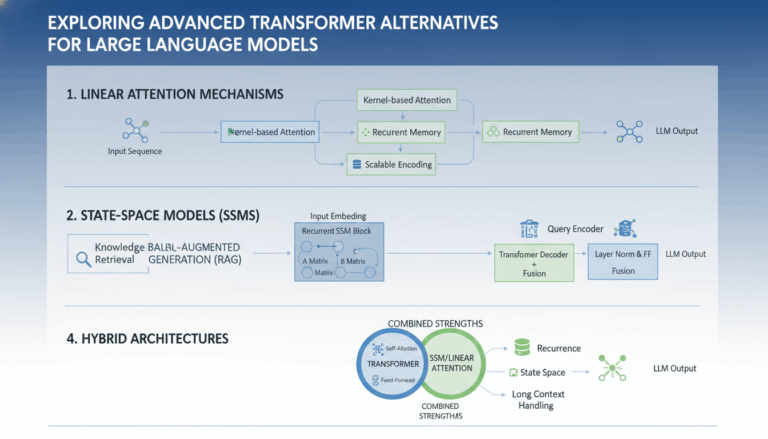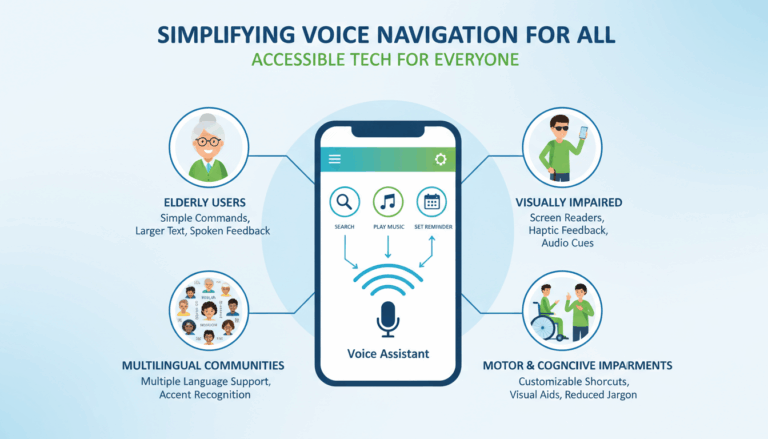Introduction to ID Generation in Software Development
In software development, generating unique identifiers (IDs) is a fundamental task that is crucial for managing and differentiating data entries within systems. Whether these IDs are used as primary keys in databases or as unique identifiers within applications, having an effective ID generation strategy ensures that each entity is distinctly recognizable.
Understanding the need for ID generation begins with appreciating its role in maintaining data integrity. In databases, an ID acts as a primary key, providing a fast and reliable way to retrieve records and establish relationships between different data tables. Similarly, in application contexts, IDs often serve to track user sessions, order numbers, or any entities requiring unique recognizability.
There are several methods employed to generate IDs, each coming with its own advantages and trade-offs. These methods are generally classified as database-generated IDs and application-generated IDs, and the choice between them often depends on the specific requirements of the project, such as scalability, consistency, and reliability.
Database-Generated IDs
Database-generated IDs are often implemented using auto-increment fields or sequences. One of the key advantages of letting the database handle ID generation is simplicity. This approach offloads the responsibility of ensuring uniqueness to the database layer, which is generally well-optimized for such tasks.
- Auto-Increment Fields: In relational databases like MySQL and PostgreSQL, auto-increment fields automatically generate a new ID for each record added. This method requires minimal configuration and is straightforward to implement.
- Sequences: Databases like Oracle or PostgreSQL use sequences, which allow more flexibility such as generating unique values across different tables or customizing the increment steps.
While convenient, database-generated IDs can become a bottleneck in distributed systems where multiple nodes need to ensure unique ID generation without central coordination. This is where drawbacks such as database locks and potential single points of failure come into play.
Application-Generated IDs
Application-generated IDs, on the other hand, are produced by the application layer, offering more control and flexibility, especially in distributed environments. These can be generated using several methods:
- UUID (Universally Unique Identifier): A common application-level technique is UUIDs, which provide a 128-bit value ensuring global uniqueness across different systems. They are particularly useful in distributed systems due to their ability to generate unique IDs without centralized coordination.
Example:
java
UUID uniqueKey = UUID.randomUUID();
System.out.println(uniqueKey);The Java code snippet above demonstrates generating a UUID. This approach requires no database transaction to ensure uniqueness, which significantly reduces latency in high-concurrency environments.
- Custom Schemes: Custom ID generation techniques, like using a combination of timestamps, machine identifiers, and counter sequences, offer even more versatility. These are especially helpful when the ID needs some meaning encoded within it, or when integrating with legacy systems where numeric IDs are preferred.
Choosing between these methods for an application depends on several factors such as the volume of data, the architecture of the system, the need for distributed transactions, and the ease of implementation. While databases provide tried-and-tested methods for local environments, application-generated IDs shine in distributed scenarios by avoiding potential bottlenecks associated with a central database.
Successfully implementing ID generation mechanisms requires a clear understanding of both the technical and functional requirements of the project, ensuring that the solution aligns with overall system architecture and future scalability needs.
Understanding Database-Generated IDs
In the realm of software development, database-generated IDs are a fundamental component that underpin the integrity of data management systems. These IDs, often utilized as primary keys, ensure that each record within a database is uniquely identifiable, facilitating efficient querying, indexing, and relationship management between tables.
One of the most straightforward implementations of database-generated IDs is through auto-increment fields. In relational databases like MySQL and PostgreSQL, this method automatically assigns the next numeric ID to a new record, eliminating the need for manual entry or application-level generation. Here’s how auto-increment might be implemented:
-
MySQL Example:
sql CREATE TABLE Students ( StudentID INT AUTO_INCREMENT, Name VARCHAR(100), PRIMARY KEY(StudentID) );In this example, each new entry into the
Studentstable will receive an incrementedStudentID, ensuring its uniqueness and integrity without requiring additional logic in the application layer. -
PostgreSQL Example:
sql CREATE TABLE Orders ( OrderID SERIAL, OrderDate DATE, PRIMARY KEY(OrderID) );The
SERIALkeyword in PostgreSQL automatically creates a sequence and sets the default incremented value forOrderID, similarly offloading the complexity of ID management to the database.
Another robust method employed by databases like Oracle or PostgreSQL is the use of sequences. A sequence is a schema-bound object that generates a sequence of numeric values, enabling more granular control over how IDs are generated. Sequences provide flexibility, such as allowing non-sequential ID generation and supporting distributed generation scenarios.
- PostgreSQL Sequence Example:
“`sql
CREATE SEQUENCE invoice_seq
START 1
INCREMENT 1
NO MINVALUE
NO MAXVALUE;
CREATE TABLE Invoices (
InvoiceID INT DEFAULT NEXTVAL(‘invoice_seq’),
DueDate DATE,
PRIMARY KEY(InvoiceID)
);
``
This setup lets theInvoicestable automatically generate new IDs using theinvoice_seq` sequence, catering to specific requirements like skipping or batch incrementing IDs.
The simplicity of database-generated IDs makes them ideal for monolithic applications where all operations are concentrated within a centralized database. The database handles concurrency controls and guarantees unique ID allocation. However, in distributed systems operating across multiple database instances or regions, this approach may encounter constraints such as scalability bottlenecks and single points of failure. When numerous nodes interact with a shared database to generate IDs, issues like lock contention may arise, potentially degrading performance.
To address these challenges, modern databases have introduced features like ID generators that can be employed in architectures involving microservices or distributed databases. Advanced configurations can distribute ID generation across different nodes, thus mitigating centralized bottlenecks, increasing throughput, and ensuring high availability.
Overall, database-generated IDs remain a cornerstone of relational database management systems, offering reliability and ease of implementation for scenarios where centralized ID management suffices. Their role in modern database systems reinforces the underlying data integrity and efficient transaction processing, essential for maintaining robust and scalable applications.
Exploring Application-Generated IDs
In modern software architectures, especially those leveraging microservices and cloud native designs, the generation of unique identifiers at the application level has become a pivotal practice. This approach empowers developers to maintain control over the ID creation process, allowing for greater flexibility and scalability within distributed systems.
Application-generated IDs can be crafted using a variety of methodologies, each with distinct advantages that cater to different system requirements. The choice of method is crucial in ensuring that IDs are not only unique but also meaningful and efficient.
One widely adopted technique is the use of Universally Unique Identifiers (UUIDs). UUIDs provide a 128-bit value that can be generated and managed within the application layer. This is particularly advantageous in environments where applications need to interoperate across various nodes without relying on a centralized system. UUIDs ensure global uniqueness, significantly reducing the risk of duplication. For example, in a Java application, creating a UUID is straightforward:
UUID uniqueKey = UUID.randomUUID();
System.out.println(uniqueKey);
This method eliminates the latency that can occur from waiting for a database to generate IDs, thereby enhancing performance in high-concurrency environments.
Beyond UUIDs, some applications utilize custom schemes for ID generation. These schemes might involve combining different data elements, such as timestamps, machine identifiers, and sequence counters. This approach not only guarantees uniqueness but also allows IDs to hold meaningful information, which might be valuable for logging, monitoring, or debugging purposes.
Consider a scenario where an application needs to generate a unique order ID. A custom scheme could concatenate the current timestamp with an incrementing counter and a machine identifier to form the ID:
import time
import socket
machine_id = socket.gethostname()
# Simulate an incrementing counter
counter = 0
# Method to generate a custom ID
def generate_custom_id():
global counter
counter += 1
return f"{int(time.time())}-{machine_id}-{counter}"
order_id = generate_custom_id()
print(order_id)
In this example, an order ID reflects not only a unique sequence but also the specific server generating the ID and a timestamp, providing additional context.
The versatility of application-generated IDs makes them ideal for cloud environments where microservices might be deployed and scaled independently. Such systems often benefit from decoupling ID generation from the database, ensuring that individual services can operate autonomously, reduce dependency errors, and enhance overall system resilience.
However, this approach is not without its trade-offs. Careful consideration needs to be given to the potential for ID collisions, especially when using shorter or less complex custom schemes. Additionally, ensuring that the ID generation process is thread-safe is essential, particularly in multi-threaded applications.
In crafting a robust ID generation strategy, developers should evaluate their system architecture, considering factors such as the scale of the application, the geographic distribution of services, and the complexity of the deployment environment. By leveraging application-generated IDs effectively, teams can unlock new levels of scalability and performance that align with modern software design principles.
Comparative Analysis: Database-Generated vs Application-Generated IDs
In software development, selecting the appropriate method for generating unique identifiers is crucial for ensuring system performance, scalability, and data integrity. Both database-generated and application-generated IDs offer distinct benefits and challenges, making a comparative analysis between these methods essential for informed decision-making.
One primary consideration when evaluating these ID generation strategies is consistency. Database-generated IDs, such as auto-increment columns and sequences, inherently provide consistent and unique values across a centralized data repository. This is advantageous when transactions are predominantly handled within a single database system, reducing the potential for ID collisions and ensuring straightforward querying. However, in distributed systems, database-generated IDs can face limitations such as scalability bottlenecks and single points of failure. For instance, auto-increment fields may become a contention point where numerous nodes attempt to allocate IDs from a central source, potentially degrading performance.
In contrast, application-generated IDs such as UUIDs or custom schemes offer greater flexibility in distributed environments. These methods allow IDs to be created independently across multiple nodes without needing constant synchronization with a central database. The decentralized nature of application-generated IDs makes them well-suited for microservices architectures or multi-regional deployments where maintaining a single, consistent point of ID generation is impractical. Despite their benefits, engineers must carefully address potential challenges like ID collisions. While UUIDs have a minuscule collision probability, custom schemes must be prudently designed to avoid replication, particularly when simplified elements are utilized.
Performance is another critical factor in choosing an ID generation strategy. Database-generated IDs often involve database locks, waiting for transaction completions, or other overheads, which could hinder throughput in high-concurrency systems. Application-generated IDs circumvent these issues by reducing reliance on database interactions for ID generation, thus minimizing latency and improving response times. For example, consider a high-volume e-commerce platform where each transaction must be swiftly recorded with a unique ID. Using application-generated IDs, the system can generate unique transaction identifiers promptly, thus improving overall efficiency.
However, the trade-off lies in complexity and maintenance. Database-managed IDs are easier to implement, often requiring little more than setting an auto-increment flag, while application-generated IDs necessitate additional logic and validations within the application code. Additionally, ensuring transactional consistency is straightforward with database-generated IDs, owing to the atomic operations supported by modern databases. Application-generated IDs, although more flexible, need mechanisms to ensure data integrity and consistency, especially in edge cases where distributed transactions might be necessary.
Security considerations also play a role in this analysis. While both approaches can be secure, application-generated IDs allow for incorporating elements that encrypt or abstract identity information, possibly masking actual data counts or preventing sequential ID guessing. Database-generated IDs, being more predictable, may require additional measures to ensure security within applications where sensitive data is involved.
In summary, both database-generated and application-generated IDs offer distinct advantages. The selection hinges on the system’s architecture, scale, and specific requirements. A centralized monolithic system can efficiently utilize database-generated IDs, while distributed, microservice-oriented architectures might align more closely with the flexibility and independence offered by application-generated IDs. Understanding these considerations helps developers design systems that are scalable, efficient, and resilient in a variety of operational contexts.
Best Practices for Choosing Between ID Generation Strategies
When determining the optimal approach for ID generation in your system, several best practices can guide the decision-making process to ensure system robustness and efficiency.
Begin with a thorough assessment of your application architecture. If your system is primarily monolithic with concentrated database transactions, database-generated IDs may suffice due to their simplicity and built-in consistency mechanisms. Leveraging the database’s capabilities, such as auto-increment fields or sequences, allows for straightforward implementation and maintenance, benefiting systems with centralized operations.
In contrast, evaluate if your application adopts a microservice architecture or operates within a distributed environment. Here, application-generated IDs may offer significant advantages by reducing dependence on a singular database for ID generation. The flexibility to produce IDs independently across various nodes reduces bottlenecks associated with centralized generation frameworks. Methods like UUIDs become invaluable in such scenarios by ensuring global uniqueness without centralized coordination, thus enhancing system scalability.
Consider the scalability needs of your project. Systems anticipating high growth or those with fluctuating loads should lean towards application-generated IDs. These allow for seamless scale-out as services can independently manage and produce identifiers. For instance, dynamic web applications or large e-commerce platforms can greatly benefit from the non-blocking nature of application-level IDs.
Performance metrics should also be meticulously analyzed. Database-generated IDs might entail locks or waits during high transaction volumes, affecting speed and efficiency. In contrast, application-generated IDs can be crafted to minimize database interaction, enhancing throughput and reducing latency, particularly beneficial in real-time data processing environments.
Evaluate the security implications associated with each method. Database-generated IDs can expose sequential patterns, which might be a vector for exploits like ID prediction attacks. Application-generated IDs, particularly when customized to incorporate cryptographic elements, might offer enhanced security by obfuscating resource counts and order.
Finally, address the ease of implementation and system complexity. Database-generated IDs generally demand less from developers in terms of setup and maintenance, serving as a low-overhead option. Alternatively, while application-generated IDs might introduce complexity through additional logic for collision handling or cross-service coordination, they provide unparalleled flexibility and autonomy, which is crucial in agile development environments.
By considering these factors — architecture, scalability, performance, security, and complexity — developers can make informed decisions on the most suitable ID generation strategy. This ensures that the chosen method aligns with the project’s current and future needs, facilitating an efficient, scalable, and secure application environment.



